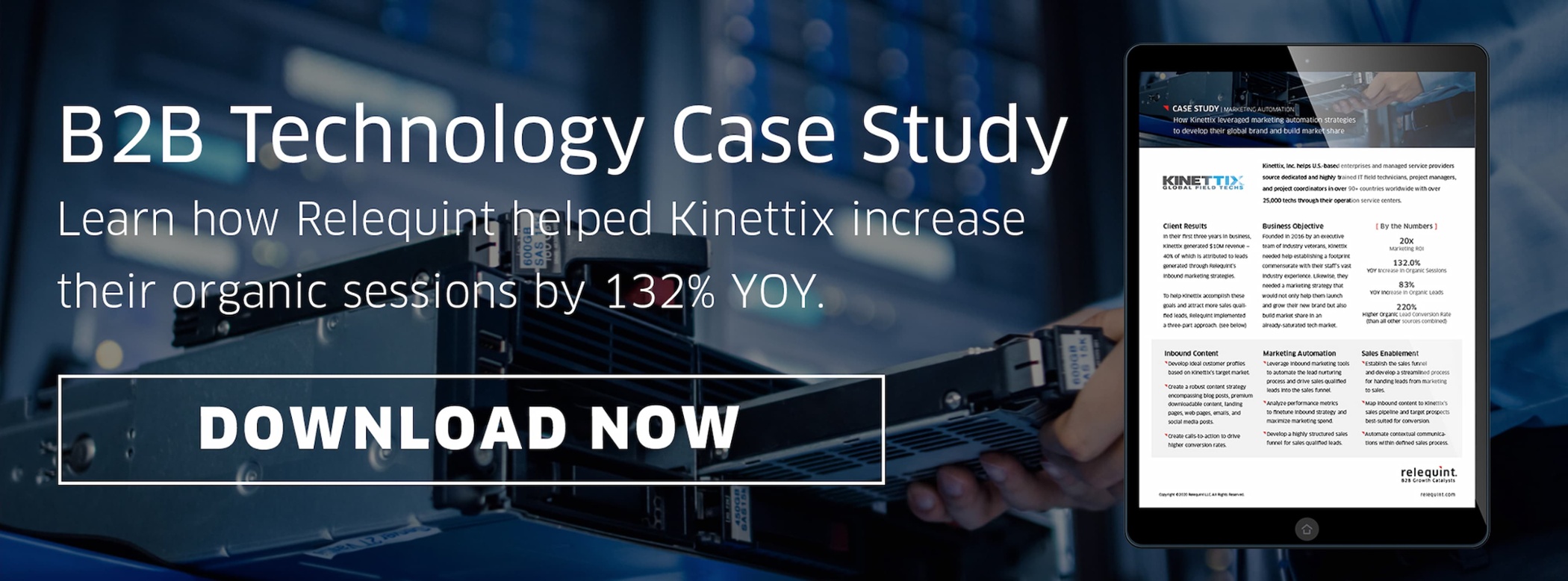Whether we're talking about sports or how to cook the perfect steak, humans thrive on competition. We'll turn anything into a rivalry, so we can take sides and prove we're with the winner. But when it comes to inbound marketing versus outbound marketing, we do ourselves a disservice when making it a competition. Yes, inbound does have its strengths — and so does outbound.
When you create synergy between the two, you begin to see the full potential of both. Out-of-date disjointed marketing processes transform into a sophisticated, growth-focused structure and innovation. Now is the time to bridge the gap to improve sales qualified lead generation and exceed performance goals.
Outbound Is Alive & Kicking
As a culture, we like to call things obsolete — newspapers, billboards, direct mail, television, radio, the payphone. Okay, we'll agree on the payphone.
The truth is you still consume this content. And you still view these ads. That "television" is more likely to be a streaming service or YouTube. That newspaper is now online. But this is still outbound marketing, and it does work.
The emergence of digital marketing has opened doors to a "new" kind of marketing, but it didn't close the door to what came before. It can make it better.
According to USA Today, 87% of people in the US know that the "Finger-Lickin' Good" slogan belongs to KFC. Outbound marketing is effective, and it gives brands:
- Instant visibility. You just have to pay more for it!
- Ability to manage frequency and repetition.
- Memorability.
- Affinity caused by familiarity (aka the “Familiarity Principle”).
That being said, the place that outbound marketing falls short is that first, it's expensive. And second, it struggles to reach people with the right message at the right time.
Because of that, it's harder and more expensive to deliver sales qualified leads. Click-through and conversion rates are low because the ad messaging may not be what this person needs to see right now to schedule that demo.
That's where inbound marketing comes into play.
How Does Inbound Complement Outbound Marketing
Inbound marketing is not only built around a buyer persona or target customer. It's also designed to align with the buyer's journey, which is:
- Awareness
- Consideration
- Decision-making
While you certainly can create outbound content to align with these stages, what's harder is delivering that content to the people in that stage without also delivering it to more people who aren't. That is unless you get a salesperson involved early, which means delivering a lead to sales before its sales-qualified.
You deliver the right message at the right time because they find the content in search when they need it. Inbound further nurtures leads through the buyer's journey with techniques like:
- Email segmentation
- Marketing automation
- Personalization
- Remarketing (Sort of outbound and inbound marketing’'s offspring)
- Marketing analytics to improve content engagement
But there's more!
67% of customers say they want a consistent online brand experience. Companies that focus on delivering this consistent experience drive 4-8% higher revenue. Inbound marketing does this with regularly published, quality content.
In addition to acquisition content, also think troubleshooting and tutorials. These address customer challenges with the B2B technology. Now, when the time to renew rolls around, the customer feels supported. Given that B2B technology acquisition costs often exceed the first year's revenues, reducing churn is critical.
Additionally, 69% of customers try to resolve an issue through self-service before contacting customer service. However, according to ZenDesk research, only around one-third of companies have created these resources. Do you smell opportunity?
In addition to renewing, these happy customers write reviews. According to G2, 95% of B2B buyers check online reviews before buying. 92% are more likely to buy after reading a review they trust.
In addition to paying customers seeing this content, future customers do as well. This further promotes your brand as one that is committed to a consistent customer experience. All of this:
- Cuts acquisition costs (as you shift to more inbound, less outbound)
- Increases retention
- Cuts overall marketing, sales, and customer service cost
- Generates more sales qualified leads
- Supports greater collaboration between marketing and sales
However, inbound can fall short in the time it takes to reach new customers. Search engine optimization (SEO) along with quality content creation can increase your organic search visibility, but it takes time for search engines to index this content. But you need to meet performance goals this quarter. Outbound delivers some ROI now. As your inbound strategies generate more quality traffic, then slowly reduce your spending on outbound to achieve the highest marketing ROI.
Looking for a more sophisticated way to get the best of both worlds and take sales qualified lead generation to the next level? Download our case study, and learn how one B2B technology company increased their marketing ROI 20X by bridging the gap between inbound and outbound marketing.![]()







 By
By 
